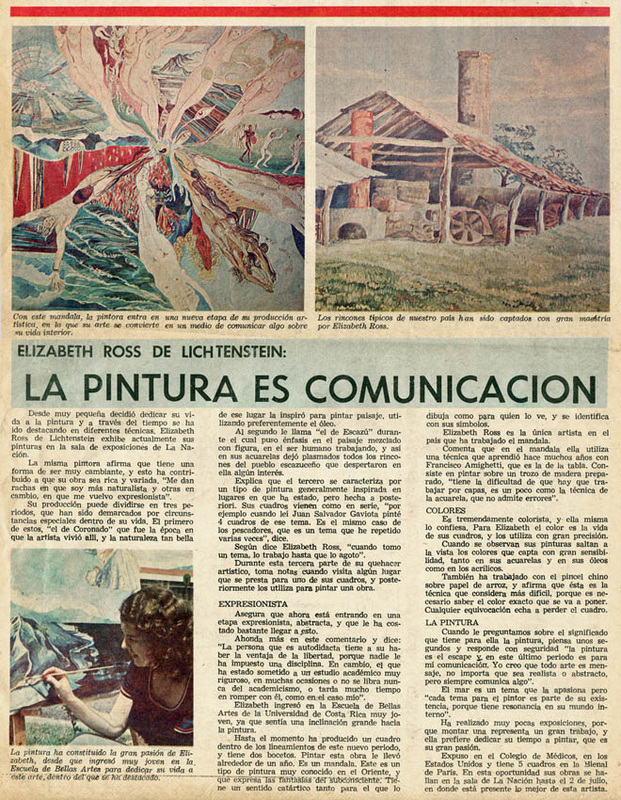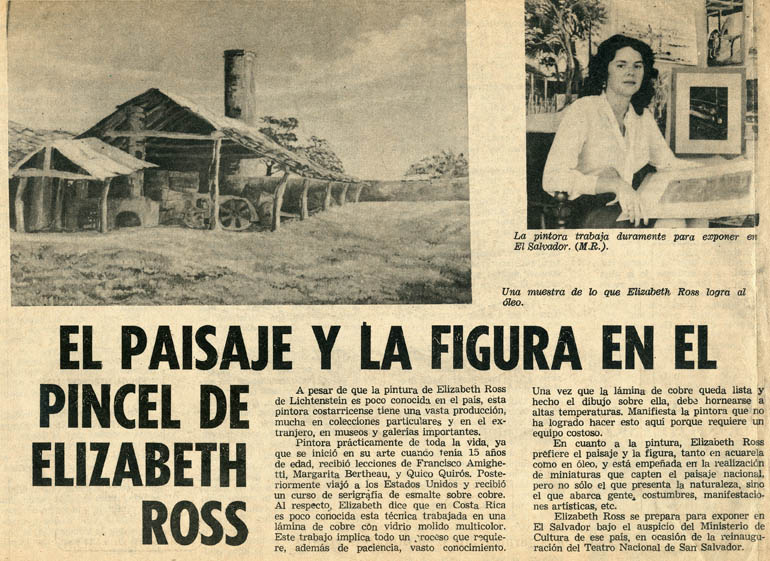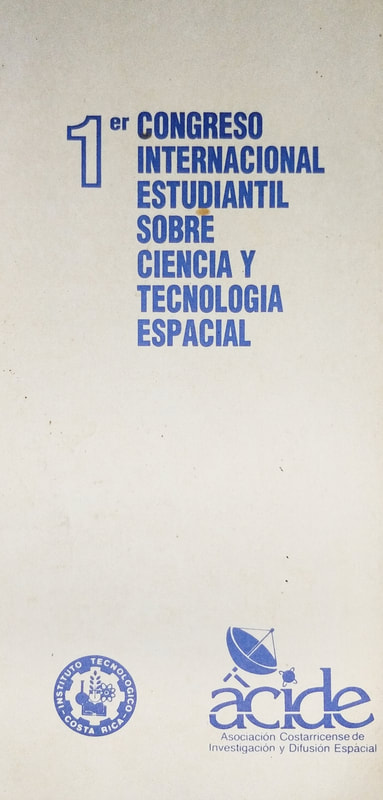
Elizabeth Ross was born in Costa Rica to an Anglo-Costa Rican family.
Her childhood passed between two cultures, two languages, and two
religions. This gave her the opportunity, later, to pass without difficulty
from one world to another, from one culture to another, and thus also his
artistic expression. Sometimes she works on several works at once, with
totally opposite themes and techniques. From the expression of every
day to fantasy, her painting goes from one technique to another.
She began studying painting from the age of 12 at the School of Fine
Arts of the University of Costa Rica, where she obtained a teaching and
bachelors degree in plastic arts with a specialty in painting. She studied
graphics and other techniques at the Universities of S. T. Winnonna,
Minni and Miami Dade C. C. in the United States of America. She
studied psychology and graduated as a Psycho-pedagogy Technician
with the Mins. in Ed. and Sal. Publi. and the M. C. Mental Health
Institute. in Costa Rica. She has been a professor of Art History and
other subjects at the U. C. R. and at the U. N. A.
In his university years, she had the opportunity to receive lessons with several of the most renowned artists and historians that are Costa Rican such as Francisco Amighetti, Margarita Bertheau, Teodorico Quirós, Lola Fernandez, Leon Pacheco, Abelardo Bonilla, Carlos Luis Sáenz, Carlos Salazar Herrera, and others, who enriched her education and taught her sensitivity to art and customs of Costa Ricans whounfortunately have been disappearing.
Her great devotion to both art and knowledge of human behavior has led her to create and teach courses of emotional restructuring at different levels and social and cultural groups.
In her work, there are three defined periods: the first, her predilection for oil with landscapes around Coronado (Costa Rica). The second, watercolor and all the themes related to adobe houses in Escazú. (CostaRica).
The third, a more abstract and symbolic theme, using different techniques, among which is the Chinese brush on rice paper, which requires great mastery of drawing and does not admit any error; so it considers it the most difficult of all.
Her childhood passed between two cultures, two languages, and two
religions. This gave her the opportunity, later, to pass without difficulty
from one world to another, from one culture to another, and thus also his
artistic expression. Sometimes she works on several works at once, with
totally opposite themes and techniques. From the expression of every
day to fantasy, her painting goes from one technique to another.
She began studying painting from the age of 12 at the School of Fine
Arts of the University of Costa Rica, where she obtained a teaching and
bachelors degree in plastic arts with a specialty in painting. She studied
graphics and other techniques at the Universities of S. T. Winnonna,
Minni and Miami Dade C. C. in the United States of America. She
studied psychology and graduated as a Psycho-pedagogy Technician
with the Mins. in Ed. and Sal. Publi. and the M. C. Mental Health
Institute. in Costa Rica. She has been a professor of Art History and
other subjects at the U. C. R. and at the U. N. A.
In his university years, she had the opportunity to receive lessons with several of the most renowned artists and historians that are Costa Rican such as Francisco Amighetti, Margarita Bertheau, Teodorico Quirós, Lola Fernandez, Leon Pacheco, Abelardo Bonilla, Carlos Luis Sáenz, Carlos Salazar Herrera, and others, who enriched her education and taught her sensitivity to art and customs of Costa Ricans whounfortunately have been disappearing.
Her great devotion to both art and knowledge of human behavior has led her to create and teach courses of emotional restructuring at different levels and social and cultural groups.
In her work, there are three defined periods: the first, her predilection for oil with landscapes around Coronado (Costa Rica). The second, watercolor and all the themes related to adobe houses in Escazú. (CostaRica).
The third, a more abstract and symbolic theme, using different techniques, among which is the Chinese brush on rice paper, which requires great mastery of drawing and does not admit any error; so it considers it the most difficult of all.
 Portrait by Costa Rican artist Carlos Salazar Herrera
Portrait by Costa Rican artist Carlos Salazar Herrera
For Elizabeth Ross, art is a message. It doesn't matter if its realistic,
surreal or abstract, it always communicates something. In her case, the
family landscape is loaded with sentimental reminiscences; the daily
scenes of human affection and warmth and a whole nationalist feeling. It
is enough to contemplate her works to feel that the artist expresses her
communion with nature and art.
A series of tragic situations in her life prevented her from a continuation
in her artistic expression; however after each unfortunate event her art
came to the rescue renewing her life.
Elizabeth Ross has lived a life of fighting adversity, of giving up her
dreams to face those tragic moments. When illness made it impossible
for her to paint large-format paintings, the artist devoted herself to
painting miniatures. This medium provided her with the opportunity to
leave a document about rural life in Costa Rica 50 years ago, which
today almost does not exist.
Her recovery has been slow but little by little it has returned to work in
larger formats. The exhibition of her paintings in this virtual gallery has
been a dream come true.
surreal or abstract, it always communicates something. In her case, the
family landscape is loaded with sentimental reminiscences; the daily
scenes of human affection and warmth and a whole nationalist feeling. It
is enough to contemplate her works to feel that the artist expresses her
communion with nature and art.
A series of tragic situations in her life prevented her from a continuation
in her artistic expression; however after each unfortunate event her art
came to the rescue renewing her life.
Elizabeth Ross has lived a life of fighting adversity, of giving up her
dreams to face those tragic moments. When illness made it impossible
for her to paint large-format paintings, the artist devoted herself to
painting miniatures. This medium provided her with the opportunity to
leave a document about rural life in Costa Rica 50 years ago, which
today almost does not exist.
Her recovery has been slow but little by little it has returned to work in
larger formats. The exhibition of her paintings in this virtual gallery has
been a dream come true.
Exhibition hall
|
Individual Exhibitions
|
Group Exhibitions
|





